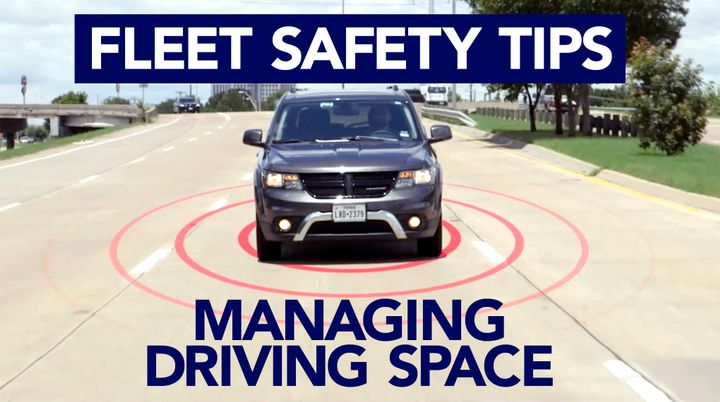How to Manage Driving Space
Fleet drivers need to manage the “space cushion” around their vehicle to avoid possible collisions.
Tailgating isn’t just an annoyance; it’s a major danger on the roadways. In fact, some 23% of all motor vehicle accidents are rear-end collisions, according to the National Highway Traffic Safety Administration. Worse still, these types of collisions result in 950,000 injuries and 2,000 fatalities every year.
While managing driving space may seem like a simple concept, it can help your drivers avoid tailgating collisions and other hazards.
Talk to your drivers about the importance of always keeping the appropriate distance between their vehicle and those around them. It’s what Smith System refers to as a “space cushion.” Whether moving, parking or stopping, drivers should understand that an appropriate space cushion will keep them, and other drivers, safer while on the road.
Drivers should use the following three elements for creating and managing their space cushion, according to Tony Douglas, Smith System’s CEO.
Speed Control
Drivers should make it a practice to look far up ahead at the road in front of them. By seeing traffic lights in advance, a motorist is in a better position to coast instead of abruptly stopping and starting. This helps maintain space around the vehicle.
When stopping behind a crosswalk or another vehicle, drivers should always leave 15 feet of space or at least one car length.
Lane Positioning
Always place your vehicle in what is referred to as the lane of least resistance. Essentially, this is the lane that offers the driver the best visibility with the fewest hazards.
However, drivers will have to change lanes from time to time. That’s why it is imperative to keep ample distance — a comfortable space cushion — at all times. For example, if you have a tailgater behind you, you’ll want to have plenty of space to move out of the way.
When considering lane positioning, also bear in mind that’s it’s never wise to drive in clusters or packs. When vehicles get lumped together too closely it limits your options to react in the event of roadway debris or unexpected moves by other drivers. Always keep an opening on either side of your vehicle, which serves as your escape route if needed.
The Essence of Communication
Communicating with other drivers is essential to your safety on the road. For example, when slowing or turning, brake early to warn other motorists behind you.
Managing space on all sides of your vehicle is crucial for other drivers. The more space around your vehicle, the more time everyone has to spot hazards ahead, react appropriately and avert accidents.
Finally, drivers should always look for extra space in parking areas. They should get in the habit of seeking out parking spots that allow them to pull through so there is no need for backing out later. Backing collisions are among the most common types of accidents, with at least 500,000 backing collisions of some type every year in the U.S.
Fuente: https://www.automotive-fleet.com
FLEET MANAGEMENT AUDIT
Fleet management is the use of a set of vehicles in order to provide services to a third-party, or to perform a task for our organization, in the most efficient and productive manner with a determined level of service and cost.
Fleet management activities are shown in the following graph 1:

Graph 1: fleet management activities
The proposal audit analyses and assesses all fleet management activities shown in the graph 1, and its main goals are:
- Know the overall status of the fleet management activities
- Provide the analysis, the assessment, the advice, the suggestions and the actions to take in order to cut costs and increase the efficiency and efficacy of the fleet management activities
With the information obtained, we’ll elaborate a report that holds the overall status of the fleet management as well as the suggestions, recommendations and the measures to take in order to cut costs and optimize the fleet management activities.
CLICK ON THE FOLLOWING LINK TO DOWNLOAD THE PROPOSED FLEET MANAGEMENT AUDIT:
Fleet Management Audit AFMC
Contact:
José Miguel Fernández Gómez
34 678254874
info@advancedfleetmanagementconsulting.com
 I´m a Fleet Management expert, and the manager of Advanced Fleet Management Consulting, that provides Fleet Management Consultancy Services.
I´m a Fleet Management expert, and the manager of Advanced Fleet Management Consulting, that provides Fleet Management Consultancy Services.



